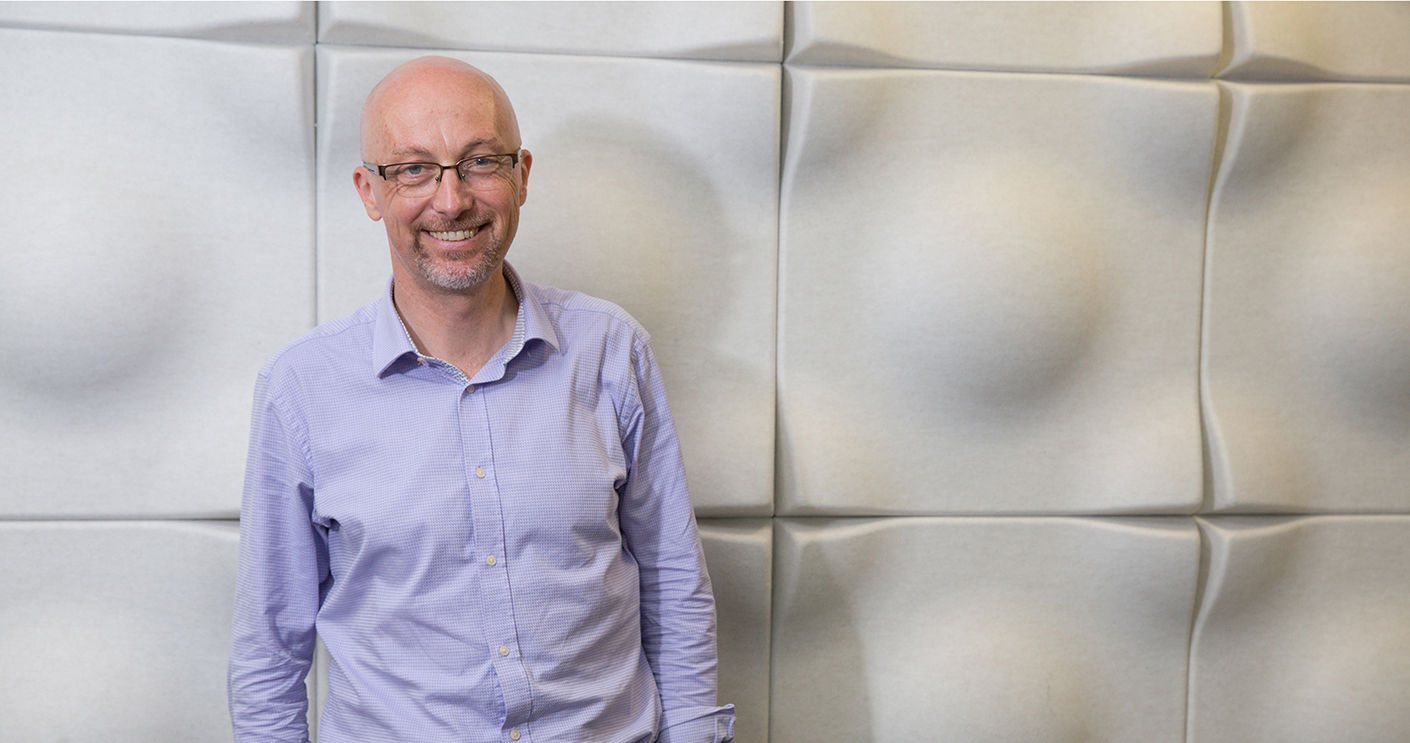Professor David McAlpine from the Centre for Language Sciences (CLaS) at the Centre for Implementation of Hearing Research (CIHR), and Director of Hearing Research at the Australian Hearing Hub, tells us about his latest research into how the brain makes sense of the sound environment around us.
Tell us a bit about your background and what excites you about your field
I started out as a physiologist and neuroscientist, studying at the University of Western Australia and I became interested in hearing after working in a lab over summer, where I was mentored by Professor Brian Johnstone, a pioneer in this field. Compared with many other fields of neuroscience, the span of research in hearing goes from the basic science all the way through to some of the most innovative technologies for addressing hearing loss, in Cochlear implants – which really are quite revolutionary therapies unlike anything in other fields of neuroscience research.
Describe the nature of your research and the problem you are tackling
My current research looks to understand how the brain makes sense of the sound environment around us. We hear with our ears – but we listen with our brain, and we are very connected to our environment through hearing. Losing the full experience of that sense of hearing, can begin to disconnect us from which has impacts beyond hearing – social impacts, loss of cognition, and increasing links to dementia. The brain uses sound to create a sense of how the world is organised spatially, and how objects interact with us and with each other and how we perceive them.
What is the real-world impact of your work?
Academics are attracted to research because they’re excited by the prospect of changing the world; then they get stuck writing grant applications and research papers. I strongly believe we need to get back to why we are doing this research in the first place. Writing these big papers deliver us a currency that we can use, not just to answer research questions but to make real change. One example? Research into how the brain understands space through hearing has led to work with a commercial partner, Cochlear, to ensure that when a non-hearing person is using a device to listen, how we create that sense of left and right that naturally comes when you have two ears.
Another example is looking at ways to join up disparate areas of research to achieve a translational outcome. It’s not enough to have a new therapy for hearing; we need to work out how we might put this into a framework, a Clinical Care Pathway, and how we might measure the right outcomes for performance. In this field we haven’t traditionally done clinical trials, but with new biological therapies coming through for hearing we have to ask, for example – how would we transform the Hearing Health Care Pathway to deliver a gene therapy for hearing loss?
How have you collaborated with colleagues from both your own disciplines and other faculties in reaching your results?
I think the best collaboration comes from brokering information and connections and by linking colleagues to each other and to other people. Brokering relationships that are important to solve a problem is something I consider a key strength of mine. Connecting up our commercial partners with the right people in different departments or different faculties who can address the problems they’re trying to fix, those are important relationships to build. I make a distinction between my competitive work – which is the international research circuit of grants and writing papers and so on – and the collaborative territory, which is about connecting people up to solve problems. One example is bringing Professor Amanda Barnier into the Hearing Research Committee to talk about her interests in older people with cognitive problems and how hearing actually impacts on that. That’s developed into a whole range of programs looking at cognition and hearing together in older people and how we can facilitate good hearing health in people who may have cognitive decline. Collaborations like this help us to get solutions into a framework that allows us to make people better or make their lives easier.
What is it about Macquarie that has allowed your research to flourish?
The university has a very collaborative approach to working with partners within and across and outside the university. The innovative Australian Hearing Hub at Macquarie introduced a very different way of working and it’s part of what makes Macquarie a distinctive university. We’ve taken a risk by opening the Australian Hearing Hub and putting everyone in the same building – ourselves, the National Acoustic Lab, the Shepherd Centre, the Royal Institute for Deaf and Blind Children, Australian Hearing – and then building the world headquarters of a major company across the road. I think it’s been innovative and distinctive to be open and to let the guard down a little bit. That co-location makes it easier to build relationships with people to do research effectively and to get people to work together across boundaries from within and beyond the university. It’s not a typical way that universities work and I think it’s been so effective.
Read about Professor McAlpine’s research in The Lighthouse.


 Back to homepage
Back to homepage